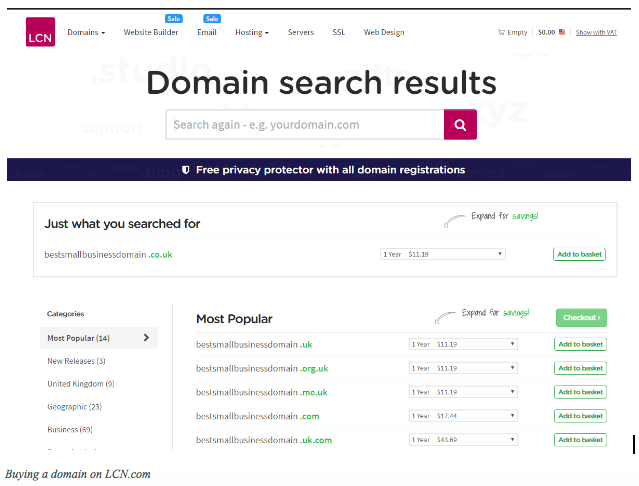In the virtual world, it can be a minefield for businesses to protect their name and rights from abuse and copying by competitors or third parties. However, this article explains some options that are open to businesses meaning all may not be lost.
For instance, imagine a bed company called SNOOZE which has the domain name snooze.co.uk and has a registered trade mark for SNOOZE in the UK. A company then comes along and starts selling beds under the domain names snoozebeds.co.uk and snoozebeds.com. Putting aside issues of trade mark infringement of SNOOZE, what can be done about the domain names?
It is possible for a business to file a complaint against the registration of a domain name to try and recover it or cancel it. Some interesting statistics: In 2018, there were around 250 domain disputes a month against generic top level domains like .com names. Some 88 per cent of the cases resulted in successful transfer of the name to the company who filed the dispute. While many of disputes are by big brand owners like Tiffany and Audi, the real possibility of success in recovering a name is encouraging.
Nominet UK domain disputes
In the above SNOOZE scenario, it would be perfectly possible to file a domain name dispute with Nominet, the company that looks after all .uk domains. They have a specific policy and procedure to follow but essentially, if you can show in evidence that:
- you have rights in a name which is the same as or identical to the domain name
- the registration of that domain name is an ‘abusive registration’
you have a strong chance of winning a dispute and having the domain name cancelled or even transferred to your business.
What is more, although having a registered trade mark that matches the domain name will absolutely strengthen the case, it is not a necessity to bring a Nominet dispute. A dispute can be based on rights in a name through use. You would have to be able to show evidence of reputation through using that name which can be quite subjective as to whether it will be sufficient. Therefore, it is advisable to seek to register your trade mark in the UK to match any domain names of your business.
Examples of when the domain name may be an ‘abusive registration’ are if the owner has tried to sell it to you or a competitor; if it unfairly disrupts your business or blocks you from owning that name or the domain is being used in a way that confuses or is likely to confuse people into believing it is connected to your business. Therefore, these are not impossible hurdles to overcome.
It is possible for anyone to file a Nominet dispute which means a business need not employ a solicitor or trade mark attorney to do this for them. However, as an attorney will have greater knowledge of the procedure and previous cases, it is advisable to seek their input and assistance. If a business files a complaint itself, the fees that would be payable to Nominet would usually be £200 plus VAT if the domain holder files no response or £750 plus VAT if a response is filed requiring a full decision by an appointed expert.
.com dispute resolution procedure
In addition to the .co.uk dispute process, all generic top level domains such as .com and .net have a Uniform Dispute Resolution Policy (UDRP) allowing the filing of a complaint against a domain name that has been registered AND is being used in bad faith.
The hurdle is a little higher on a .com action in that you must prove the following three elements:
- the domain name is identical or confusingly similar to a trademark or service mark in which you have rights; and
- the domain owner has no rights or legitimate interests in respect of the domain name; and
- the domain name has been registered and is being used in bad faith.
The requirements to show the bad faith step are similar to the Nominet ‘abusive registration’ in that disrupting your business or approaches to sell the name to you can be bad faith. It can also be bad faith if you show the domain name owner is intentionally attempting to attract, for commercial gain, internet users to its web site by creating a likelihood of confusion with your name and rights. In our scenario, the SNOOZE owner could file and would likely succeed in a .com dispute.
If the domain name does not link to an active website, one cannot show that it is being used in bad faith. Equally, if the owner has a legitimate business that it has been operating under the domain name for some time, the case may well fail to satisfy the second requirement.
Again, a registered trade mark is not a requirement to bring a .com dispute but it will hugely increase the chances of success and the strength of the case if the domain name against which the complaint is filed contains or consists of a registered trade mark owned by your business.
The current official fee to bring a .com dispute is $1500 so it is a more expensive endeavour than a Nominet action. Again, the input of professional legal advice in any dispute is advisable.
In any domain name dispute, sending a letter before action to the domain name owner to advise them of your rights and that you will commence a dispute action if necessary can often get the desired result. It may at least open negotiations for your business to buy the domain name for a reasonable sum and seek to have the other party change its name.
The lesson is that there are actions out there to recover domain names that have taken the rights of a business and that for UK domains in particular, the requirements to succeed are not too onerous.





